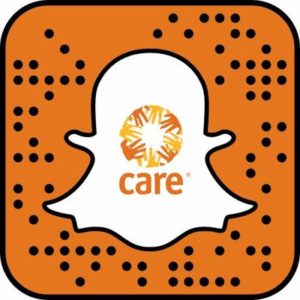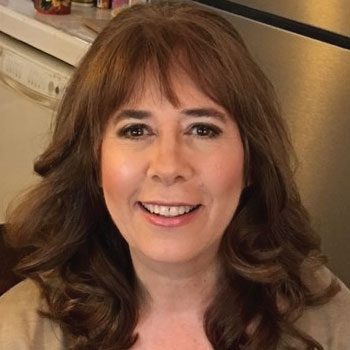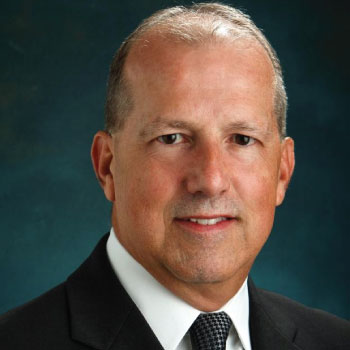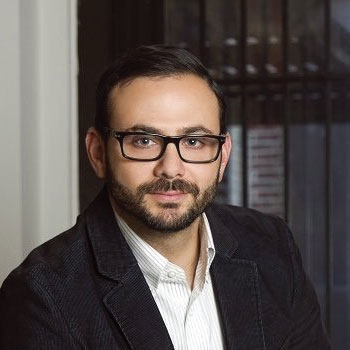Well-honed media relations propels CARE USA’s Syrian crisis awareness campaign to a Bulldog Grand Prize

Global humanitarian organization CARE USA, which fights to defeat poverty and achieve social justice around the world, was seeking a unique and compelling way to bring visibility to the ongoing Syrian conflict as the fifth anniversary of the crisis approached. Despite numerous obstacles, including a bare-bones budget, competing storylines and the presidential-primary media circus dominating headlines, the CARE team—thanks to some compelling out-of-the-box strategic brainstorming—put together a milestone not-for-profit campaign that serves as an award-winning blueprint for success.
“Our initial plans to help draw attention to the Syrian refugee crisis around the 5th anniversary of the war had fallen through, so coming into 2016 we had less than three months to execute two top communications priorities: (1) harness the expected media appetite around the 5th anniversary (March 15th) to promote compassion and support for Syrian refugees and (2) leverage the 70th anniversary of the CARE Package (May 11th) to increase awareness of CARE and our organization’s humanitarian responses today,” says Brian Feagans, CARE’s Director of Communications and Media Relations.
“We had our work cut out for us on both fronts,” he adds. “Finding fresh angles on the Syrian crisis would be hard, especially in a crowded space where many other NGOs would be pitching their own Syria@5 stories. And all of us faced stiff competition for news space from the presidential primaries dominating the coverage. A final challenge: while the CARE Package is an important piece of our heritage, we needed a narrative that ended not in the past but rather transported people to CARE’s work on the frontlines of emergencies today.”
Then, with one breakthrough idea, the CARE communications team figured out a way to answer all those challenges with a single campaign. They asked recipients of the original CARE Packages—which Americans sent to families clinging to survival in the wake of WWII—to write letters of compassion and hope to Syrian children who are now part of the world’s largest refugee crisis since WWII. Read on to see how CARE strategized and implemented a very special campaign that drew worldwide attention to the crisis and the org’s humanitarian efforts—and earned the team four awards in Bulldog Reporter’s 2016 Not-for-Profit Awards, including the prestigious Grand Prize, which represents the most compelling campaign performance across all categories.
The Strategy: The group’s overarching objective was to cultivate powerful connections between refugees of one generation and those of another, document those connections and share the resulting photos, video footage and other resources with media outlets so they could build their own stories. They sought to humanize today’s Syrian refugees through the eyes of WWII refugees, who would give media a fresh lens on the Syrian refugee crisis and, through media interviews, act as the perfect antidote to the anti-Syrian refugee backlash playing out in the news daily.
CARE specifically sought letter-writers who had received CARE Packages in Germany, knowing that that they, like many Syrians today, assumed Americans considered them the enemy, only to receive a Special Delivery from a stranger who cares on the other side of the Atlantic. They also wanted to give people a chance to be part of this story and join the chorus of compassion, issuing a call to action in both news media and social media—write your own message to Syrian refugees for the campaign, titled “Special Delivery: Letters of Hope.”

Sajeda, 16, Zargq, Jordan; Syrian refugee
As with many not-for-profit campaigns, a chief challenge was money, or lack thereof. “We often, as was the case here, have to execute a campaign in-house, soup to nuts,” says Feagans. “We didn’t have the budget to hire outside consultants in the conception phase, PR firms for media outreach or a full video crew. We did hire a contract videographer/photographer in Carey Wagner, who was absolutely amazing. That and flying our communications staff around the country and to Jordan used up most of our budget.”
The team outlined the following campaign objectives:
- Launch the campaign around the fifth anniversary of the Syrian conflict to promote compassion and support for Syrian refugees in news and social media.
- Leverage the 70th anniversary of the CARE Package to increase awareness of CARE, the CARE Package history and the organization’s humanitarian work today.
- Engage more people in CARE’s mission, as supporters of its advocacy work, followers in social media and/or donors.
- Relay to Syrian refugees the messages of hope and compassion that come from the campaign.
The Execution: CARE began in December, with $20,000 and three months to execute the project. They first asked colleagues in CARE’s Jordan office to identify a dozen children to receive the letters and send one-paragraph summaries of the children: their age, the basics of their refugee story and, in some cases, their interests and hopes for the future. They then matched children with specific letter-writers based on gender and age—for example, 16-year-old Sajeda was matched with Helga, who was 16 when she was a refugee, and Zaher, 8, was matched with Gunter, who was 8 during his family’s darkest time as refugees.
The original CARE Package recipients were sent the summaries of the children and asked if they’d be willing to write a letter drawing on their own experience to encourage the Syrian children. When the first letters arrived in January, CARE knew they had pulled on emotional heartstrings. The original CARE Package recipients had written vivid accounts of their experiences—near starvation, ripped from their homes—that sounded so similar to what Syrian refugee children are going through today. And importantly, the letters all ended with a hopeful tone from these WWII refugees who had immigrated to America and gone on to live happy lives.
CARE then sent writer Shawn Reeves and videographer/photographer Wagner to document the experience as the CARE Package recipients put their letters into their own symbolic CARE Packages with treats, old photos and any other meaningful items they wished to send. Then, with Wagner’s camera rolling, Emergency Communications Manager Holly Frew and Regional Communications Officer Mahmoud Ahmed delivered those letters and packages to the children in Jordan. What they captured, time after time, was an incredible connection between people who, though separated by decades and distance, share so much. News outlets had a fresh, compelling storyline—an upbeat antidote to the rancorous election-year debate in the U.S. over whether and how to support Syrian refugees. And by connecting the Syria crisis to the CARE Package, the organization was able to tie in its 70th Anniversary celebration to shine a light on CARE’s humanitarian work in Syria and other parts of the world today.
As media relations efforts took shape, the team benefited from its established reporter relationships over time. “We have built a rapport with reporters and influencers over the years, trying to approach them only when we have strong story hooks or newsy initiatives, so they trust us as providers of good content and information,” Feagans explains. “On good days they listen to us! We also work hard to connect journalists to experts when they need them, so they’re more likely to take our calls and read our emails when we approach them with a pitch.”
The campaign was launched on March 8 at care.org/specialdelivery, including a feature video, a place for people to send their own messages of hope, and four feature stories using Exposure, a photo-friendly storytelling platform. People could click to read the actual letters and/or hear each of the original CARE Package recipients read their letters. A media kit that housed all the materials was created, including downloadable links for raw video and sound files so outlets could create their own video and audio products. A shorter version of the video was also customized for social media, featuring more text for easy viewing on smartphones. CARE planned to launch the story March 8th in Mashable, an outlet that helps content go viral, hoping that there would be a build in news media and social media heading into the fifth anniversary a week later.
“Our media relations efforts were very targeted. We knew we wanted to first approach outlets that got the story out in social media,” says Feagans. “That’s why we targeted Mashable to break the story first. That coverage was seen by other outlets who weren’t even on our pitch list. A Now This! producer saw the story early on, came to us and asked if they could use the raw footage to make their own video. We said of course. Their video had more than 1.4M views on Facebook and more than 24,000 shares. And it influenced our short video production, too. We added more text, realizing how much that helps in the smartphone era,” he explains.
“We also tailored our pitching regionally. We knew each market where a letter writer (CARE Package recipient) lived would see that person as their unique media hook different from the national stories. And we targeted places with strong CARE Package connections, such as Philadelphia, where CARE Packages were originally assembled,” Feagans continues. “One early challenge was that media outlets wanted to interview the child refugees in Jordan, which just wasn’t possible. We got around that by offering up b-roll and photos of them. And we emphasized how terrific the CARE Package recipients here in the U.S. were in interviews.”
The Results: Substantial news stories drawn from the Special Delivery campaign have spanned the media spectrum, from viral content leaders such as Mashable and Now This to broadcast pieces on “NBC Nightly News” and Fox News, radio segments on NPR and the BBC, and online and print pieces by the likes of the Washington Post, the Chicago Tribune and the Philadelphia Inquirer. The coverage has been overwhelmingly upbeat, focusing on the connections between the WWII refugees and the Syrian refugee children. The pieces consistently link to CARE and its Special Delivery page, positioning CARE as both a front-line responder in the Syria crisis and the creator of the original CARE package.
“Our results far exceeded our goals. We had hoped for a dozen major media articles and, because we’d never done anything like this before, maybe a couple hundred messages of hope from the public. But the results were more than 10 times better than that,” Feagans offers. “We thought national network TV, in particular, would be tough given it was primary season. So we were thrilled when both ‘NBC Nightly News’ and Fox News did extensive stories.”
The stories have stood out amid the news landscape with a positive message. The coverage came in two distinct waves, around the fifth anniversary of the Syrian crisis and again around the 70th anniversary of the CARE Package. The campaign also performed strongly in social media, producing CARE USA’s most-watched video of all time and a ‘Now This’ video viewed more than 1.4 million times.
“CARE synchronizes communication themes across all public channels, but we don’t just re-use and re-print the same content on multiple channels,” Andisheh Nouraee, CARE’s Director of Digital Engagement, relates. “Facebook and Twitter audiences want different things than email and web audiences, for instance, and different things from each other. That’s why we used a 30-second, text-heavy version of our Special Delivery video in social channels, with the full 4-minute version on care.org and in email. The day-to-day purpose of having an account on a particular social network should always be to engage people on that network. Help people appreciate following you—don’t just pummel them with links and asks. When you follow that rule, they’re more apt to follow you, and your calls-to-action. That’s why in the Special Delivery campaign we took pieces out of the overall story—photos and short snippets of text—and told them on social media as self-contained posts. It wasn’t all ‘read more,’ ‘click here’ and ‘donate now.’ It was primarily about telling people compelling stories.”
Specific results include:
- Special Delivery stories appeared in 140 news media outlets, creating roughly 730 million media impressions.
- Special Delivery debuted through a Mashable piece that gained 12,700 shares and helped the story go viral.
- The Now This video was viewed 1.4 million times and shared 20,000 times.Substantial pieces appeared on: “NBC Nightly News with Lester Holt ,” Fox News, The Washington Post, BBC World Service, Mashable, Now This, MSN.com, ABCnews.com, NPR’s “Marketplace,” Time.com, Huffington Post, Chicago Tribune, PBSNewsHour.com, Atlanta Journal-Constitution, The Philadelphia Inquirer, Associated Press, AP TV, Yahoo!, CCTV, The Mirror of London, AOL.com and the local ABC affiliate in Indianapolis.
- On Facebook, CARE’s campaign posts reached 2.3 million people; CARE’s short video racked up more than 140,000 views, a record for CARE USA video. As a result, CARE gained
- 990 email sign-ups through Facebook, building its base of supporters.On Twitter, posts reached more than 672,000 people; Influencers such as Nicholas Kristof, Arianna Huffington, and CNN Impact tweeted as well.
- More than 1,600 messages of hope were submitted on care.org.
- Some 140 people also donated more than $8,000 (even though this was a secondary ask).Posters displaying an Arabic translation of some of the messages have gone up at CARE’s community centers in Jordan and more are on the way.
- The Special Delivery campaign played a key role at the CARE National Conference in Washington, D.C., May 2-4, highlighted by a 70th Anniversary of the CARE Package celebration that honored 20 original CARE Package recipients and senders in attendance, including three of the letter-writers (Helga, Gunter and Renata). They looked on as the crowd of more than 500 watched the feature Special Delivery video, bringing tears to many eyes, including those of three Syrian refugees in attendance and the event’s keynote speaker, Madeleine Albright, herself a child refugee in WWII. CARE also set up a Special Delivery photo/video booth for sending messages of hope for Syrian refugees. The org is currently developing a video with those materials, to be distributed in CARE channels and news media, targeted at audiences in the U.S. and in the Middle East.
- CARE’s fundraising teams are now using the content to gain support for CARE’s work online and in direct mail.
“When seeing how much traction the campaign was getting, we decided to extend it beyond the original ending point around the 70th anniversary of the CARE Package,” Feagans offers.
“We continued it by having local Syrian refugees in Atlanta, for instance, translate our messages of hope into Arabic at a World Refugee Day event. And we are now using elements of the campaign in our plans around back-to-back refugee summits called by President Obama and the UN in September. This time our messages of hope are headed not to refugees but rather the world leaders who need to support them.”
Secrets of Success: Feagans provides some winning insights below that your next not-for-profit campaign should consider—tips that demonstrate why CARE won the Grand Prize and three silvers (in the “Best Media Relations Campaign,” “Best Issue/Cause Advocacy Campaign” and “Best Campaign in the $10,000-25,000 Budget” categories) in Bulldog’s 2016 Not-for-Profit Awards:
- Tie historical elements together to showcase impact: “Facilitating strong connections between unexpected sets of people (gray-haired WWII survivors in America and young Syria refugees in Jordan) can take your campaign a long way. Journalists are looking for surprising stories, especially ones that cut against the emotional grain. In our case, the Special Delivery campaign injected hope and humanity into a story often seen as hopeless and inhumane.”
- Make sure content and multimedia are organized for maximum utility: “Have your raw communications assets (photos, video footage, etc.) ready in a format that media outlets can quickly put together themselves, to build their own stories and assets.”
- Employ a mix of tools. “Our short, text-heavy video got many more views. It was good for getting the story out in social media. But I doubt it made a single person cry. That was the job of the longer, four-minute video, which really touched people, including journalists, and inspired them to share the story with a wider audience, write their own messages of hope and, in some cases, give to support CARE’s refugee response.”





